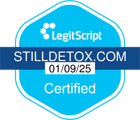In a world where pain management becomes a necessity for many, understanding the difference between hydrocodone and oxycodone is crucial. Among these, opioids class of drugs that include the illegal drug heroin, synthetic opioids such as fentanyl, and pain relievers available legally by prescription, such as oxycodone (OxyContin®), hydrocodone (Vicodin®), codeine, morphine, and many others, – are common option. Hydrocodone vs oxycodone is a crucial subject when it comes to potency and addiction.
Opioids are derived from opium, a compound found in the poppy plant. They work by binding to opioid receptors in the brain, spinal cord, and other areas, reducing the transmission of pain signals. However, they can also affect areas of the brain controlling emotion, which can further complicate their impact, leading to feelings of intense pleasure or relaxation and in unfortunate cases, an overdose.
What Is Hydrocodone?
Hydrocodone is an opioid medication frequently prescribed for managing moderate to severe pain. It is often combined with other pain relievers, such as acetaminophen (Tylenol), to enhance its pain-relieving effects. This combination is typically used when over-the-counter medications are insufficient, such as after dental procedures or injuries.
In addition to its pain-relieving properties, hydrocodone can also suppress coughing and is sometimes included in prescription cough syrups. Its effectiveness in pain reduction and cough suppression stems from its action on the brain and nervous system.
What Is Oxycodone?
Oxycodone, similar to hydrocodone, is an opioid pain reliever with unique characteristics. It is frequently prescribed for moderate to severe pain, such as post-surgical pain or serious injuries. Oxycodone is available either as a single-ingredient medication or in combination with other pain relievers like acetaminophen.
A notable feature of oxycodone is its availability in multiple forms, including immediate-release and extended-release tablets. Immediate-release forms offer rapid pain relief, which is beneficial for sudden or unexpected pain. Extended-release tablets provide consistent pain control for ongoing, chronic pain by slowly releasing the medication over time.
Like hydrocodone, oxycodone binds to opioid receptors in the brain and nervous system, reducing pain perception and often inducing relaxation and euphoria. Due to these effects, oxycodone must be used with caution, as it carries the potential for misuse and addiction, especially if not taken as prescribed. Common side effects include drowsiness, dizziness, and nausea.
According to United States Department of Justice;
Hydrocodone [4,5α-epoxy-3-methoxy-17-methyl-morphinan-6-one tartrate (1:1) hydrate (2:5), dihydrocodeinone] is a semi-synthetic opioid most closely related to codeine in structure and morphine in producing opiate-like effects. The first report, that hydrocodone produces euphoria and habituation symptoms, was published in 1923. The first report of hydrocodone dependence and addiction was published in 1961.
Hydrocodone vs Oxycodone
Hydrocodone and oxycodone are semi-synthetic opioids manufactured in labs with natural and synthetic ingredients. Both are prescribed to treat moderate to severe pain, often following a surgery or injury, or for health conditions like cancer.
While both can be highly effective, they also come with serious risks, including addiction and overdose, especially with prolonged use. They can cause similar side effects such as drowsiness, dizziness, nausea, vomiting, constipation, and addiction. The misuse of these substances can lead to dependency, withdrawal, or even fatal overdose.
Hydrocodone vs Oxycodone Key Differences
- Potency: Oxycodone is perceived as being more potent and having a higher potential for addiction compared to hydrocodone.
- Absorption: Oxycodone is absorbed more consistently in the body, making it a more stable choice for chronic pain.
- Availability: Hydrocodone is more widely prescribed and available compared to oxycodone.
Hydrocodone vs Oxycodone: Which one is more addictive?
The question of addiction between hydrocodone and oxycodone is complex and depends on various factors, including individual physiology, the specific formulation of each drug, and usage patterns. However, in general, oxycodone is often considered more addictive than hydrocodone.
Oxycodone has a higher potency compared to hydrocodone, which can contribute to its potential for dependence. It’s known for producing a strong euphoric high, and because it can more effectively cross the blood-brain barrier, it may lead to a higher potential for abuse and addiction.
Both medications, however, are Schedule II drugs, indicating a high potential for abuse, which may lead to severe psychological or physical dependence. The risk of addiction with these substances emphasizes the need for medical professionals to prescribe them cautiously and monitor their use closely.
It’s also crucial for patients to follow the prescribed dosage and communicate openly with their healthcare providers about their treatment. If there’s a history of substance abuse or other risk factors present, an alternative method of pain management may be recommended.
Read: The Crisis of Blues Drug and Counterfeit Opioids
What are the differences and similarities between Hydrocodone and Oxycodone, potency, effects, and risk of addiction?
| Feature/Characteristic | Hydrocodone | Oxycodone |
|---|---|---|
| Classification | Opioid Analgesic | Opioid Analgesic |
| Potency | Generally less potent | Generally more potent |
| Duration of Effect | Short-acting | Short-acting and Long-acting |
| Commonly Combined With | Acetaminophen | Alone, Acetaminophen, Aspirin |
| Treatment Use | Moderate to severe pain | Moderate to severe pain |
| Risk of Dependence and Addiction | High | High (potentially higher due to potency) |
| More Addictive | ✓ | |
| Duration in the System | Shorter half-life | Longer half-life |
| Absorption | Fast | Fast, extended-release formulations slower |
| Availability | Prescription only | Prescription only |
| Brand Names | Vicodin, Norco, Lortab | OxyContin, Percocet, Roxicodone |
| Risk of Respiratory Depression | Yes | Yes |
| Common Side Effects | Nausea, vomiting, constipation, dizziness | Nausea, constipation, dizziness, headache |
| Formulations Available | Oral (tablet, syrup) | Oral (tablet, liquid, concentrate) |
| Schedule Classification (DEA in USA) | Schedule II | Schedule II |
| Used in Cough Medicine | Yes | No |
| Pain Relief Effectiveness | Effective for moderate pain | Effective for moderate to severe pain |
| Metabolism | Liver (CYP3A4 enzyme) | Liver (CYP3A4 and CYP2D6 enzymes) |
| Interaction with Other Medications | Yes | Yes |
Potential for Addiction
The potential for addiction is a significant concern associated with the long-term use or misuse of hydrocodone and oxycodone. Both medications can lead to physical dependence, where individuals experience a compelling urge to continue usage even after the cessation of pain relief needs.
According to the National Institute on Drug Abuse (NIDA), both hydrocodone and oxycodone carry a risk of abuse and addiction. Statistics indicate that opioid-related overdoses have become a significant public health issue in the United States.
Although both hydrocodone and oxycodone share a similar potential for addiction, some studies suggest that oxycodone may be more potent, potentially leading to a higher risk of addiction.








